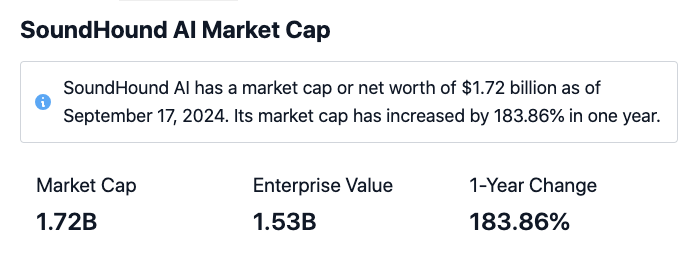20 Pro Suggestions For Choosing Ai copyright Trading
20 Pro Suggestions For Choosing Ai copyright Trading
Blog Article
Top 10 Tips To Backtest Stock Trading From Penny To copyright
Backtesting AI strategies to trade stocks is crucial especially in relation to highly volatile penny and copyright markets. Here are ten essential tips to make the most of your backtesting.
1. Backtesting Why is it necessary?
Tip. Be aware that backtesting can help in improving decision-making by evaluating a particular method against data from the past.
This is important because it allows you to test your strategy prior to investing real money on live markets.
2. Utilize High-Quality, Historical Data
Tip - Make sure that the historical data are accurate and up-to-date. This includes price, volume and other metrics that are relevant.
Include information on corporate actions, splits and delistings.
For copyright: Make use of data that reflects market events, such as halving or forks.
Why is that high-quality data produces real-world results.
3. Simulate Realistic Trading conditions
TIP: When you backtest, consider slippage, transaction cost, as well as spreads between bids and requests.
The inability to recognize certain factors can cause people to have unrealistic expectations.
4. Test Across Multiple Market Conditions
Backtesting is an excellent way to test your strategy.
The reason is that strategies perform differently in different conditions.
5. Concentrate on the most important metrics
Tip Analyze metrics using the following:
Win Rate: Percentage profitable trades.
Maximum Drawdown: Largest portfolio loss during backtesting.
Sharpe Ratio: Risk-adjusted return.
What are these metrics? They allow you to evaluate the potential risk and rewards of a particular strategy.
6. Avoid Overfitting
TIP: Ensure your plan doesn't get too optimized to match the historical data.
Test on data outside of sample (data not intended for optimization).
Instead of developing complicated models, make use of simple rules that are reliable.
The reason: Overfitting causes poor real-world performance.
7. Include transaction latency
Simulation of time delays between the creation of signals and their execution.
For copyright: Consider the exchange latency and network latency.
Why? The impact of latency on entry/exit times is particularly evident in fast-moving industries.
8. Conduct Walk-Forward Tests
Tip: Divide historical data into multiple times:
Training Period: Improve your plan.
Testing Period: Evaluate performance.
Why: The method allows the adaption of the method to various time periods.
9. Backtesting is an excellent method to integrate forward testing
TIP: Apply techniques that have been tested in the past for a simulation or demo live-action.
What's the reason? This allows you to confirm that the strategy is performing in the way expected under current market conditions.
10. Document and then Iterate
Tip: Keep detailed records of backtesting assumptions, parameters and the results.
Why: Documentation can help to refine strategies over time, and also identify patterns.
Bonus Utilize Backtesting Tools Efficaciously
Tip: Leverage platforms like QuantConnect, Backtrader, or MetaTrader for robust and automated backtesting.
What's the reason? Modern tools streamline the process and reduce mistakes made by hand.
Applying these tips can aid in ensuring that your AI strategies have been well-tested and optimized for copyright and penny stock markets. Follow the top rated click this link on ai stock prediction for site tips including ai stock trading bot free, copyright ai, ai trading platform, stock analysis app, ai stocks, trade ai, ai financial advisor, best ai penny stocks, ai trading software, best ai stocks and more. 
Top 10 Tips To Monitor Market Sentiment Using Ai To Pick Stocks, Predictions And Investing
Monitoring market sentiment is vital for AI forecasting of stocks, investing and picking. Market sentiment is a major factor that can affect stock prices and overall market trends. AI-powered instruments can analyze large amounts of data to identify signals of sentiment. Here are 10 ways for using AI to make stock-selection.
1. Natural Language Processing can be utilized to perform Sentiment Analysis
Tip: You can use AI-driven Natural Language Processing tools to study texts from news articles, financial blogs and earnings reports.
What is the reason: NLP is a powerful tool that allows AI to understand and measure the emotions, opinions, or market sentiment expressed through non-structured text. This helps traders make better trading decisions.
2. Monitor Social Media and News to detect real-time signals from the news and social media.
Tips: Make use of AI algorithms to collect data from real-time social media, news platforms and forums in order to observe changes in sentiment related to market or stock events.
Why: News and social media can have a rapid influence on market movement and can be particularly volatile in assets such as penny stocks and copyright. The analysis of sentiment in real-time can provide actionable insights for short-term trading choices.
3. Incorporate Machine Learning to predict sentiment
Tips: You can utilize machine learning algorithms to predict the future trends of market sentiment by using the historical information, signals of sentiment and price fluctuations (e.g. connected to news media or social media).
Why? By analyzing patterns in the historical behavior of stocks as well as sentiment data, AI can anticipate changes in sentiment before significant price movements, allowing investors an edge.
4. Combining Sentiment Data with Fundamental and Technical Data
Tips: Apply sentiment analysis along with conventional technical indicators (e.g. moving averages, RSI) and fundamental metrics (e.g., P/E ratio and earnings reports) to develop a comprehensive investment strategy.
Sentiment is an extra data layer which complements fundamental and technical analysis. Combining these factors enhances the ability of AI to make more accurate and balanced stock forecasts.
5. Monitor Changes in Sentiment During Earnings Reports Key Events, Key Events and Other Important Events
Utilize AI to gauge sentiment prior and after major events, such as announcements of earnings or new products. These factors can influence the price of a stock significant.
What's the reason? These events are usually the causes of significant market sentiment shifts. AI can identify market sentiment changes quickly, giving investors an understanding of the potential for stock movements in response.
6. Concentrate on Sentiment Clusters to determine market trends
Tip: Group data about sentiment into clusters in order to identify larger market trends or segments. Also, stocks that have a positive or negative sentiment.
Why? Sentiment clustering helps AI detect trends that aren't apparent in the individual stocks or smaller datasets. It can also help to identify industries or sectors that have shifting investor interest.
7. Apply Sentiment Scoring for Stock Evaluation
Tip: Develop sentiment scores for stocks based on analysis from forums, news sources, or social media. Utilize these scores to rank and filter stocks in accordance with the sentiment of either.
The reason: Sentiment scores are an objective measure to gauge the mood of the market towards an individual stock, which can lead to better decision-making. AI can help refine these scores over time to improve the accuracy of predictive analysis.
8. Track Investor Sentiment across Multiple Platforms
Monitor sentiments across different platforms (Twitter; financial news websites; Reddit). Compare sentiments between various sources to have a clearer picture.
Reason: The sentiment of investors is distorted by specific platform. A look at investor sentiment across different platforms will provide a more complete and balanced picture.
9. Detect Sudden Sentiment Shifts Using AI Alerts
Tip: Create AI-powered alerts which inform you of significant shifts in sentiment to a particular stock or industry.
Why: Sudden changes in sentiment like an rise in negative or positive comments, can precede the rapid movement of prices. AI alerts enable investors to take quick action before the market adjusts.
10. Study trends in sentiment over the long-term
Tip: Use AI to determine the long-term trends in sentiment for specific sectors, stocks and even the broader market (e.g., the bullish or bearish mood over a period of months or years).
What's the reason? Long-term trends in sentiment could be used to identify stocks with a high future prospect, or to alert investors to the possibility of new dangers. This broader outlook complements the mood indicators for the moment and may guide long-term strategies.
Bonus: Combine sentiment with economic indicators
Tip Use the combination of sentiment analysis and macroeconomic data such as GDP as well as inflation and employment statistics can help you know how the general economic climate affects sentiment.
Why? Broader economic conditions impact the sentiment of investors. The price of stocks is directly affected by these conditions. AI can offer deeper insight into the market's dynamics by linking economic indicators with sentiment.
By implementing the tips above, investors can effectively utilize AI to track, interpret, and predict market sentiment. This will enable them to make accurate and informed predictions and investments, as well as more educated stock choices. Sentiment analysis provides an unique in-depth, real-time analysis that is in addition to traditional analysis, aiding AI stock analysts navigate complicated market conditions more accurately. See the top best stock analysis app for blog examples including stocks ai, stock ai, ai for copyright trading, copyright predictions, stock ai, ai trade, artificial intelligence stocks, incite, copyright predictions, ai day trading and more.